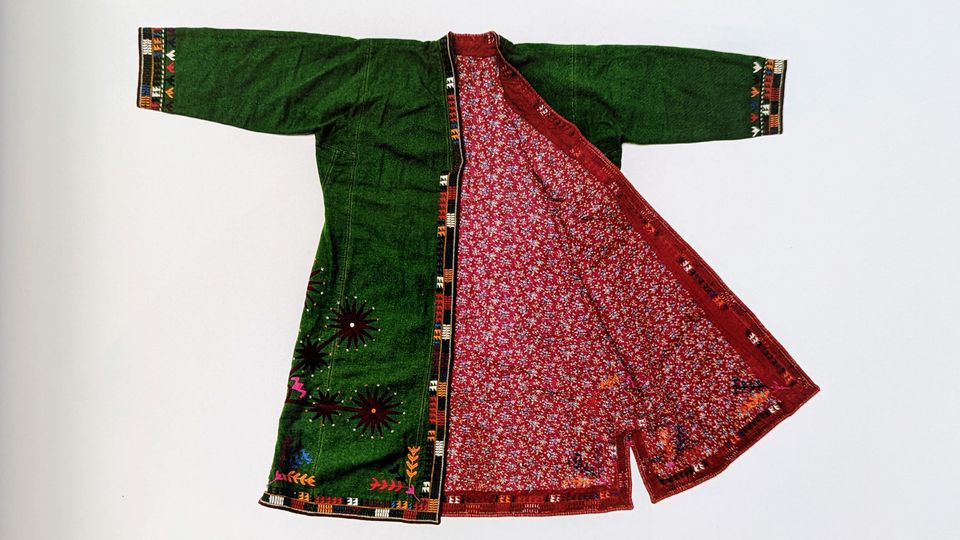The Sociology of John Mayer’s Outfit Guidance

John Mayer's "point-system" for balanced creative dress reveals a few key realities about how culture works
Guitarist and songwriter John Mayer has played a pivotal role in raising the profile of obscure streetwear among regular American guys. For many years, Mayer avoided speaking directly to the press about his unique clothing choices — notably, visvim’s robe-like jackets. But towards the end of the 2010s, he began to open up about his approach to getting dressed.
In a 2019 interview, Mayer revealed to GQ that he chooses the garments for his daily outfits based on a points-system, which helps him achieve “balance” between admiration and exasperation. He explains:
You have a certain number of points you can spend on an outfit. Let’s say you have ten points. Wearing a robe is an instant six-pointer. If you’re going to wear something that’s hyper-bold, you’re spending most of your points, you better go jeans and T-shirt.
He first mentioned this points system concept on the Great Debates podcast from December 2018, an idea apparently borrowed from Richard Simmons’s Deal-A-Meal:
Fashion, in terms of what you wear every day, is like Deal-A-Meal. Let’s say you have ten points. And you can’t spend more than ten points. If you’re going to wear a hat, that’s like five, six points. If you’re going to wear jeans with orange patches on them, that’s like six points. So if you’re going to wear something that’s really interesting like a Japanese robe with a whole bunch of multi-colors on it, that’s eight points. Jeans and T-shirts is all you have left.
The podcast hosts then expand this idea by musing whether individuals can gain more than ten points to spend, and Mayer agrees that this is possible: “Pharrell has the most points.”
Mayer may have intended his points-system as a simple guide for men who want to get dressed in creative ways, but its composition reveals a few key social rules around clothing and individual choices.
1. There is a social cost to breaking conventions.
In explaining culture, I’ve focused on the concept of conventions — the tacit rules that permit certain arbitrary practices and not others. Societies allow many different types of garments, but meeting the mutual expectations of men in contemporary American society requires wearing casual T-shirt, jeans, and sneakers. Mayer accepts the conventionality of these garments by assigning them a low-point value. Wearing something outside of these conventions — say, a Tibetan robe — comes with social costs: e.g. others' annoyance, outrage, and even disgust. This is why Mayer assigns hyper-bold garments a higher point value.
Here we see the math behind good taste: a balance of subtle experimentation with existing convention so that creative choices result in pleasant surprise rather than angry shock. Mayer balances his eight-point robes (breaking convention) with one-point T-shirts (conforming to convention). In defining this principle in a semi-objective way, we also see why some individuals can more easily achieve "better" taste than others: Their deep knowledge of social conventions (e.g. the rules of dress) enables more accurate calculations of how much they can get away with and where they should pull back.
2. We all face limitations on our individual choices.
In our supposed liberal society, we should be able to dress as ridiculously as we want every day. Why can't Mayer's daily outfits combine Tibetan robes, a Arby’s-logo Mountie hats, yellow rain boots — and a bare chest? The points-system shows that this isn't practical. If we break too many conventions at once, the respect for our creativity sours into opprobrium. This is why Mayer allows himself only ten points to spend: He can be creative, but not too creative.
3. Higher status individuals have more freedom to experiment.
Mayer gives himself ten points but admits superstars like Pharrell and Lady Gaga have earned themselves even more points to spend. And he suggests that our struggle for individual identity is to always "fight" for more points. Mayer's status allows him to wear an eight-point visvim robe; a normal person may not have enough points to even attempt such a fit. Pharrell can go even further in pushing the boundaries.
This insight reflects how status hierarchies work. The more status you have, the more deference you receive from others, which gives high-status individuals the ability to break convention without social punishment. At the same time, individuals at the top of any hierarchy must also be distinctive, because otherwise they may appear to be equal to people in the immediate lower tiers. So everyone can dress in weird ways, but only those with high-status are rewarded for it. (And this also leads to the principle that the social value of a garment is rarely in the garment, but in its usage by a high-status person.)
One caveat: Different status categories come with different social benefits. Artists are allowed to dress in odd ways; bankers aren't. Sixty-year-old CEO David Solomon of Goldman Sachs spins EDM as DJ D-Sol, but still wears extremely conventional suits and ties in his official weekday banking duties.
4. Privilege means not having to maximize your point usage.
Mayer admits that he doesn’t always use his ten points, because he's not always up for the challenge every single day. An eight-point outfit is easier precisely because it comes with lower social risks. Here we land on another important truth about creative expression and identity: Breaking convention is required for distinction but can be exhausting. Once individuals have established high status positions, they can then afford not to be distinctive on a daily basis. If GQ anoints Mayer as a style icon, he no longer has to maximize his points every day. This is the same principle that explains why Old Money can avoid conspicuous consumption and still maintain high social standing. Privilege affords relaxation of the struggle.
